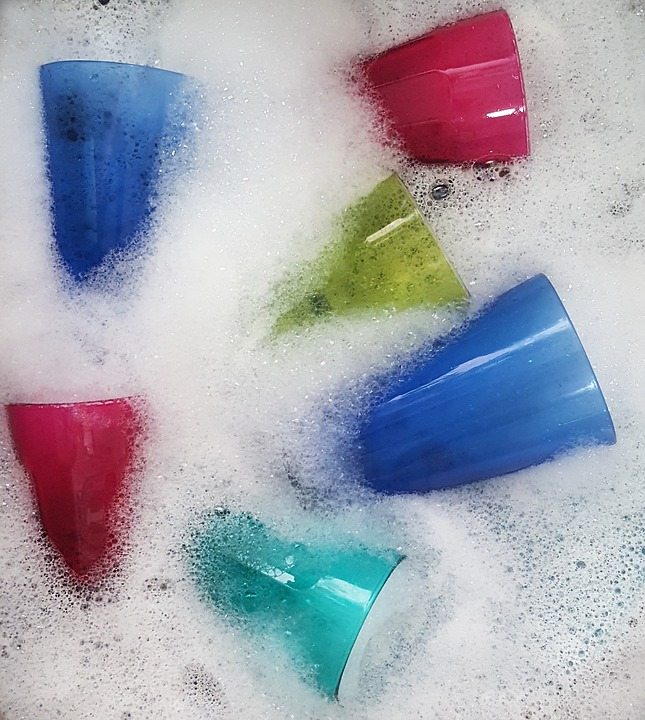|
|
|
There is clutter, and then there is clutter. Some clutter is deep rooted, emotionally charged, and physically intimidating. Taming it demands an investment of time and energy. Surface clutter, the clutter that piles up on a day to day basis, mostly the result of procrastination, can be significantly reduced by implementing a few simple clutter-busting behaviors. There are two simple steps involved in eliminating surface clutter.
Start by training yourself to notice things that are out of place. One way to do this is to routinely scan a room to identify items that have strayed from their proper home. As you practice scanning, make a mental note of the kinds of clutter that tend to pile up. This will give you a sense of where systems are needed. In particular, be on the lookout for common contributors of clutter – dishes, mail, clothing, etc. The next step is to begin turning clutter-building habits into clutter-busting behaviors. It’s easier than you might think. To help you get started, I’ve identified five common problem areas and suggestions for building clutter-busting behaviors. These simple habits can significantly reduce the daily buildup of clutter. Consistently do these five things, and I guarantee you’ll notice a difference in the amount of surface clutter in your home.
The bed is the focal point of the bedroom, and as such, it has the power to dictate the mood of the space. A rumpled, unmade bed is an invitation to be messy. Clothing, shoes, and other articles strewn lazily about look perfectly at home with an unmade bed. On the other hand, a neatly made bed communicates order and inspires tidiness. To toss things about sloppily in such a space creates a sense of discord and unease. In essence, the space feels at odds with itself.
A made bed communicates something to its owner as well. It says, “I care. I’m invested in my space and myself.” Simply making the bed starts each day off on the right foot. Before leaving the bedroom, you have accomplished something productive and set a positive tone for the day.
It’s tempting to toss dirty dishes in the sink and walk away, but like an unmade bed, a sink full of dirty dishes sends a message that order is not a priority. It also serves as a nagging irritant. Those dirty dishes are a constant reminder of a thing that requires your attention. The fact that you’re not dealing with it can lead to feelings of guilt. The more dishes that pile up, the less appealing the task becomes, and the more you’ll feel like procrastinating. The longer you procrastinate, the more dishes pile up and the more time consuming the task becomes.
Before you know it, a few dirty dishes can lead to a whole lot of [unnecessary] stress. But it doesn’t have to be that way. Try these tips for controlling dirty dishes – so they won’t control you.
Clothing, whether dirty or clean, can be a major culprit in contributing to clutter. The funny thing is, it only takes a few seconds to hang up or put away a single article of clothing, barely more time than it takes to dump it on the floor, the bed, the furniture, etc. If, however, it’s left to pile up over the course of days, the time required to put things where they belong increases significantly. The key is to set yourself and your family up for success.
This can be achieved by simplifying the process as much as possible. Here are some examples:
For many people, there is something truly intimidating about mail. Mail requires decision making, and we often encounter it at a point in the day when we’re tired of making decisions. So, we leave it to deal with later, and before long, it has become an overwhelming pile. On the other hand, if you’re only dealing with a single day’s mail, it only takes a few minutes (sometimes less) to complete the task.
The secret to preventing pile up is to develop (and utilize) a system for dealing with the mail. Designate a spot for opening the mail each day. Make sure there is a pair of scissors or letter opener nearby. It’s also useful to have a bin handy for recycling junk mail. As soon as the mail enters your house, sort it according to type: things to be recycled (put them directly into the bin), things to be shredded, things that require immediate attention (to do now), and things that require action but can wait (to do later). Have a place for each type of item, and immediately put items in their proper place. If you have time to deal with an item that requires action, do it.
This may seem like a no-brainer, but a lot of clutter collects from people walking in the door and dumping whatever they're carrying. The best way to prevent this is to have a place for things like purses, keys, coats, and shoes, and put them in their place as soon as you enter.
If you’ve made purchases, put them away. If you’re carrying the mail, deal with it. Most things can be put away in a matter of minutes (or less). Not putting things away leaves the home feeling cluttered and invites buildup over time which requires significantly more effort to be dealt with.
Try implementing these five suggestions for conquering surface clutter. I think you'll find that it helps a great deal with controlling the overall clutter in your home.
9 Comments
11/16/2019 07:11:41 am
According to my point of view, Cleaning a house is not easy especially for some celebrations such as a party. The tips that you mention in the article is really for me to clean my home. Thanks for the great info. This is really helpful for me to clean and neat my home.
Reply
11/24/2019 06:50:35 am
Awesome info, thanks for the tip Joy, with 2 toddlers I know I’m going to have a lot more stains to deal with! 🙂
Reply
5/23/2020 06:24:32 am
I have the swiffer hand duster and love it! I have to get the floor one. I find myself cleaning all the time but the broom and vacuum don’t always get up all of our pet hair. Great tips, Sandy.
Reply
11/23/2020 05:38:59 pm
Thanks for taking the time to respond. I'm glad you found it helpful!
Reply
Leave a Reply. |
Archives
November 2022
Categories
All
|
Proudly powered by Weebly



 RSS Feed
RSS Feed